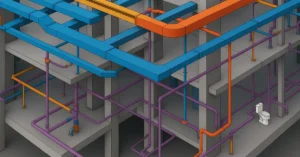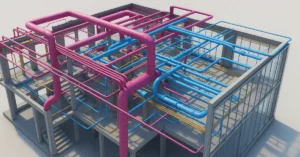Site Selection and Analysis in Villa Design – Elevate Architectural Craft

Selecting the right site for a villa is akin to choosing the perfect canvas for a masterpiece. It sets the stage for the architectural narrative that unfolds, influencing everything from spatial arrangement to environmental impact. In this segment of our Ultimate Guide to Designing a Villa as an Architect, we delve into the art and science of site selection and analysis, exploring how architects can leverage the unique characteristics of each site to create extraordinary living spaces.
Understanding Site Selection:
- Location, Location, Location:
The adage holds true in villa design, where the location of the site plays a pivotal role in shaping the overall experience. Consider factors such as proximity to amenities, accessibility, neighborhood character, and future development plans. A prime location not only enhances the villa’s desirability but also adds value to the investment. - Topography Matters:
The topography of the site significantly impacts design decisions, influencing everything from building orientation to foundation design. Sloping sites offer opportunities for creative design solutions, such as terraced landscapes and split-level interiors. Conversely, flat sites may require minimal earthwork but offer less natural drainage and ventilation. - Embracing Views and Vistas:
One of the most coveted features of a villa is its views, whether it’s sweeping panoramas of the countryside or tranquil vistas of the sea. Architects must strategically position the villa on the site to optimize views while ensuring privacy and protection from elements such as prevailing winds or harsh sunlight. - Orientation and Solar Access:
Optimal orientation is crucial for maximizing natural light and minimizing energy consumption. By aligning the villa with the sun’s path and prevailing breezes, architects can enhance indoor comfort and reduce reliance on artificial lighting and mechanical cooling. Site analysis tools such as sun path diagrams and wind studies aid in determining the most favorable orientation. - Contextual Integration:
A successful villa design harmonizes with its surroundings, seamlessly integrating into the natural landscape while respecting local architectural vernacular and cultural heritage. Whether nestled among lush foliage or perched atop a rugged cliff, the villa should feel like an organic extension of its environment, enhancing rather than detracting from the scenic beauty.
The Art of Site Analysis:
- Conducting a Site Survey:
Before embarking on design, architects must conduct a comprehensive site survey to gather data on existing conditions, including boundaries, contours, vegetation, soil composition, and utilities. This information serves as the foundation for site analysis and informs design decisions throughout the process. - Analyzing Microclimatic Factors:
Microclimatic conditions such as sun exposure, wind patterns, and temperature variations exert a significant influence on villa design. Architects must assess these factors to mitigate potential hazards and optimize environmental comfort. Strategies such as passive solar design, natural ventilation, and thermal massing help regulate indoor climate year-round. - Considering Environmental Impact:
Villa design should prioritize environmental sustainability and minimize ecological footprint. Site analysis enables architects to identify sensitive habitats, water bodies, and natural resources that must be preserved or mitigated. Green building strategies such as rainwater harvesting, native landscaping, and energy-efficient design reduce environmental impact and enhance ecological resilience. - Navigating Regulatory Requirements:
Compliance with local building codes, zoning regulations, and environmental ordinances is non-negotiable in villa design. Architects must familiarize themselves with regulatory requirements and obtain necessary permits and approvals before proceeding with the project. Engaging in early consultations with regulatory authorities helps identify potential constraints and streamline the approval process. - Balancing Constraints and Opportunities:
Every site presents a unique set of constraints and opportunities that must be carefully balanced in the design process. Whether contending with steep slopes, restrictive setbacks, or protected habitats, architects must find creative solutions that maximize site potential while minimizing adverse impacts. Flexibility, ingenuity, and collaboration are key to overcoming site challenges and unlocking hidden potential.
Conclusion:
Site selection and analysis are pivotal stages in the villa design process, laying the groundwork for architectural innovation and excellence. By carefully assessing site characteristics, understanding environmental dynamics, and navigating regulatory requirements, architects can transform ordinary sites into extraordinary living environments. In the next installment of our Ultimate Guide to Designing a Villa as an Architect series, we will explore the art of conceptualization and sketching, where ideas take shape and dreams become reality. Join us as we continue our journey to elevate the craft of villa design, one site at a time.
Click here to gain access to the full-villa course
If you’re interested in learning more about architecture firms in Europe, check out this comprehensive list of the top 50 firms compiled by Archgyan. From innovative startups to long-established industry leaders, this list has it all. Take a look and discover some of the most inspiring and influential architecture firms in Europe today.
If you’re interested in architecture and want to learn more about this amazing field, subscribe to our podcast on youtube
For more SketchUp tutorials, head to https://www.sketchupguru.com










